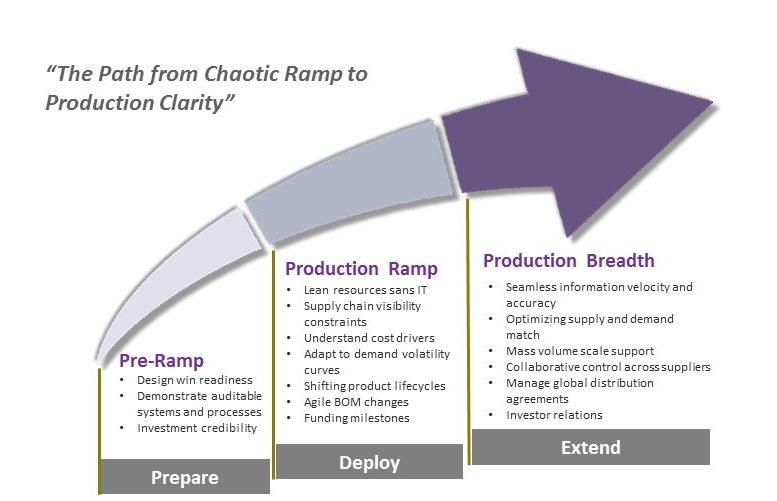 Continuing a thread started in a previous blog post, let’s look at the stages that Tensoft’s semiconductor, sensor, and module start-up customers typically experience. These stages can be characterized as pre-ramp, production ramp and production breadth. The ability to successfully navigate each stage requires a clear understanding of the industry issues and drivers inherent in each phase, and the appropriate resources and processes to manage them.
Continuing a thread started in a previous blog post, let’s look at the stages that Tensoft’s semiconductor, sensor, and module start-up customers typically experience. These stages can be characterized as pre-ramp, production ramp and production breadth. The ability to successfully navigate each stage requires a clear understanding of the industry issues and drivers inherent in each phase, and the appropriate resources and processes to manage them.
Tensoft has helped hundreds of semiconductor startups and mid-sized companies through ramp and growth. This experience has led us to some observations about what to expect in each stage. One of Tensoft’s webcasts, “Challenges to Scaling Production Ramp,” covers this topic in some detail. To view the entire recording, click here. For an excerpt from that webcast, read on below.
“Understanding your supply chain management needs requires an understanding of where you are in your operations ramp cycle, and what needs you will have at each stage of the operations ramp cycle. While each semiconductor or sensor company will have unique requirements in the production process, there are often striking similarities in the ramp cycle across the industry.
As the illustration here suggests, this three-stage cycle forms a “path from chaotic ramp to production clarity.”

The pre-ramp stage is when you start to prepare for getting into our production. This stage is also pre-revenue, but you must still get through tapeout, and through first silicon, to get to a point where you can actually acquire and get a design win.
That takes time – design wins and getting sockets can be a long process in terms of bidding and qualification. Product cycles are short, however. For example, a major cell phone release can be a one-year cycle initially with an end run afterwards. But because there are large players putting out major releases every year, you can be designed in and then designed out again at a rapid state. Design win readiness often means looking at this from a standpoint of multiple chips, not just one product family.
At pre-ramp, you may also need to demonstrate auditable systems to get those design wins. And in terms of investment credibility, you may have to meet milestones to get funding and releases in terms of those milestone achievements.
Once you’ve made it to production ramp, you may be faced with an urgent need to deploy processes and systems to manage through hockey stick growth. However, you may still have lean resources and people wearing multiple hats across the business. Your supply chain may well consist of companies in 8 or more different time zones, with multiple suppliers in the process. Understanding all of the constraints may get increasingly difficult.
One thing that’s interesting and unique about semiconductor and sensor companies is that they often have the same complexity at $1M in revenue as they will later at $100M. The primary changes as production ramps are likely to be the increases to the volume of production and number of product families. But the complexity to build each chip – to ship it, to produce it, and to deliver it on-time – remains relatively unchanged.
At the next stage, production breadth, the stage needs to be set for a real volume environment. If this hasn’t been achieved during the production ramp stage, problems will arise. The ability to move into the production breadth/extend stage becomes tenuous without systems and processes that are specific to your industry and your growth stage.
Ultimately people can only be the process for so long. As you move into the production breadth stage, it’s time to go beyond just managing the supply chain and having a strong structure in place. Now you’ll need to match and optimize supply and demand as you get into higher quantities of shipments. You’ll need to look at multiple vendor strategies in terms of second sourcing and backups. You’ll need to look at much more reach in terms of those global distribution agreements. You also may be looking at an IPO at this stage, with high investor expectations and additional compliance requirements.
We hope that today’s discussion of the three stages of the semiconductor startup lifecycle has given you some additional framework and tools to think about how you prepare, deploy, and extend the business as you ramp.”
To learn more about how to overcome the challenges to scaling a start-up’s production ramp including real world industry insights, please watch the recording here. Afterward, for a one-on-one demo of Tensoft’s ramp-ready solutions, please visit our contact us page.